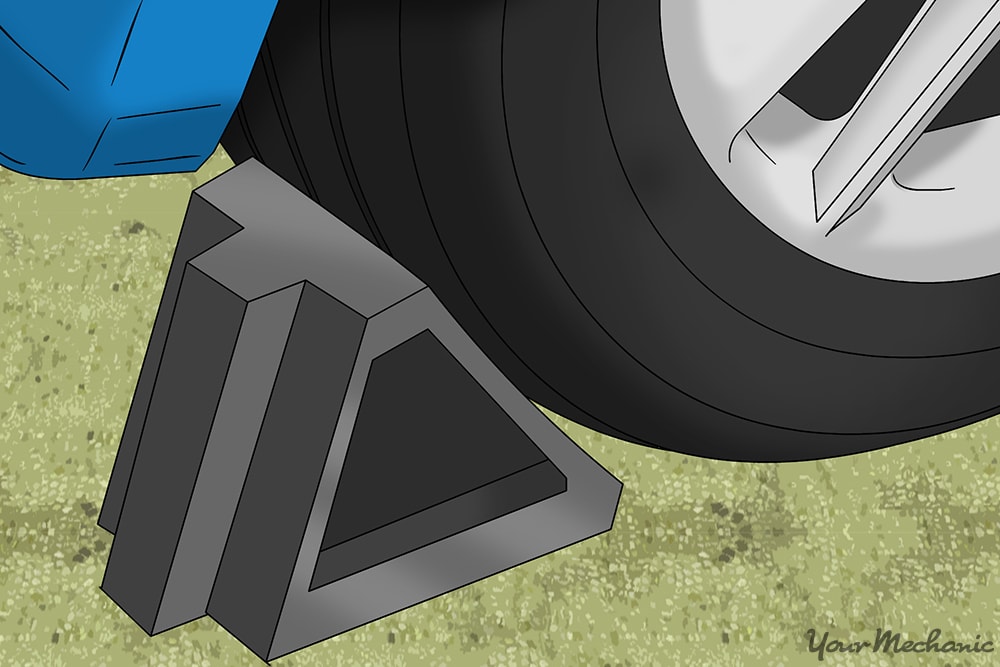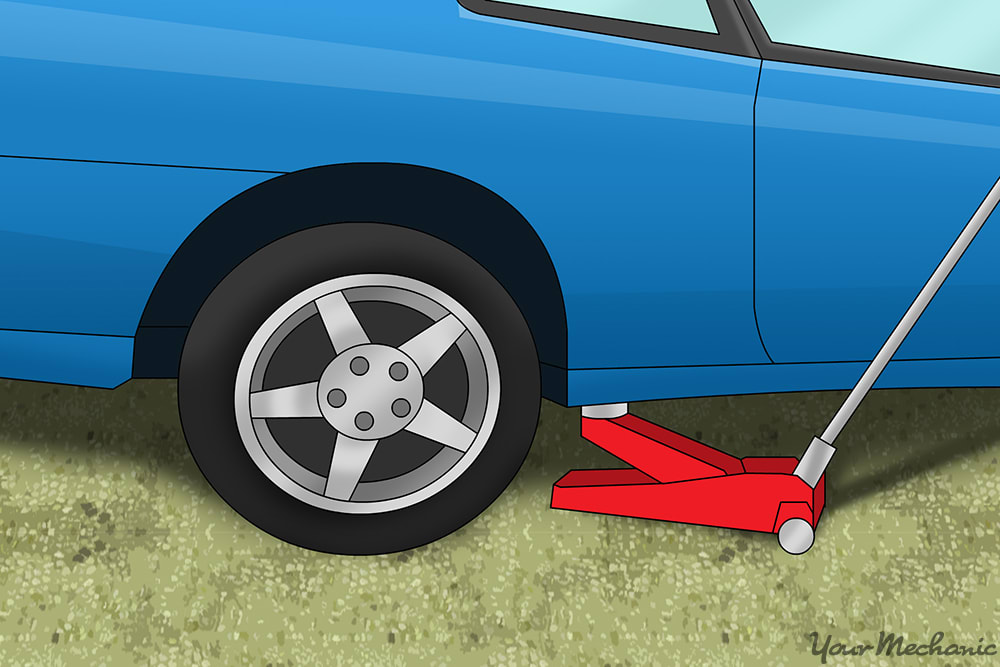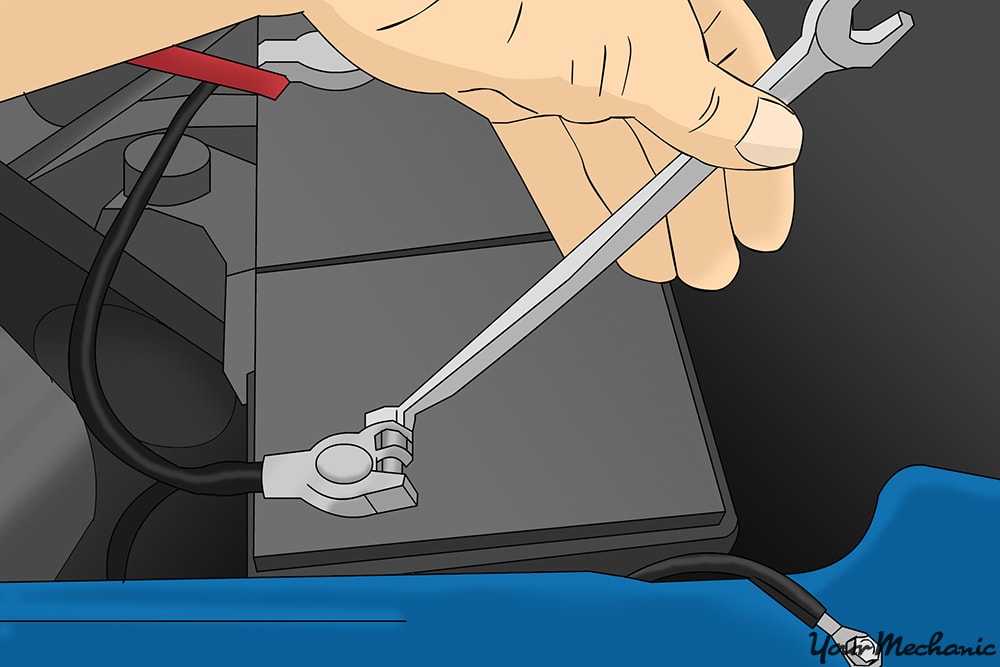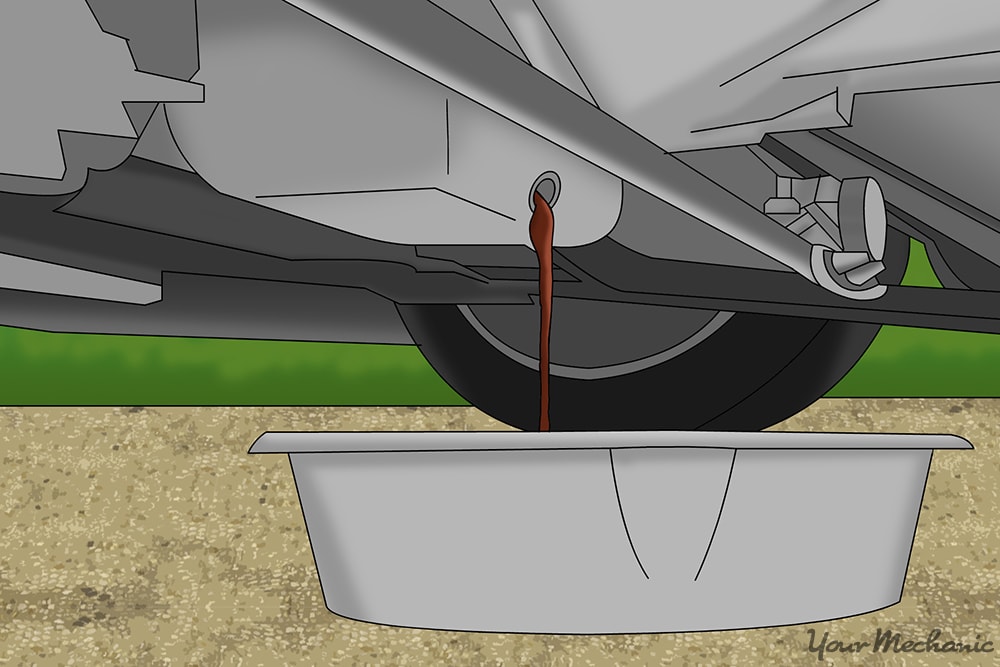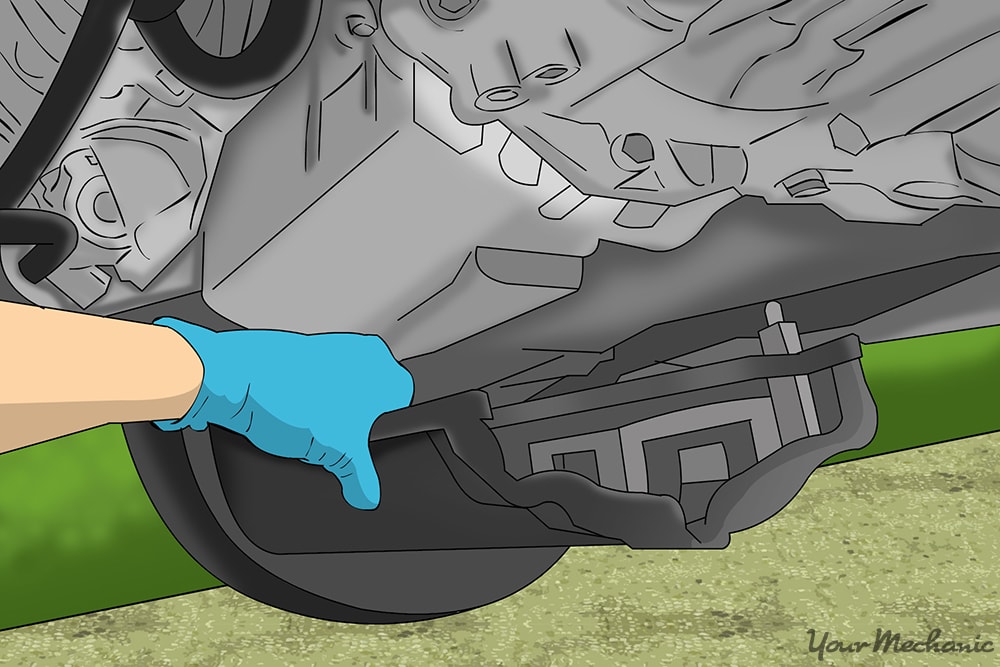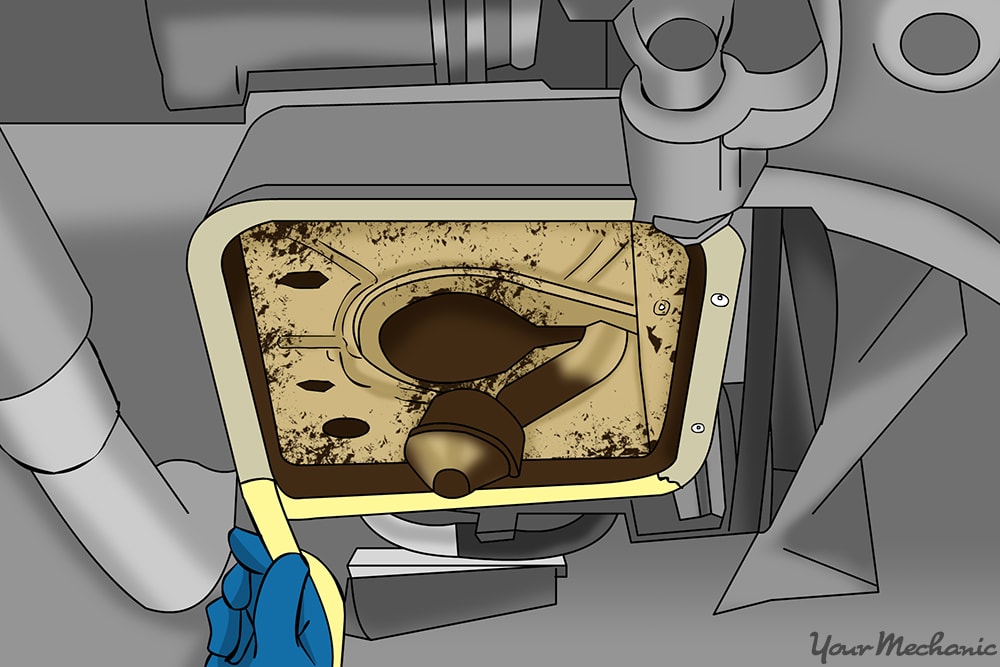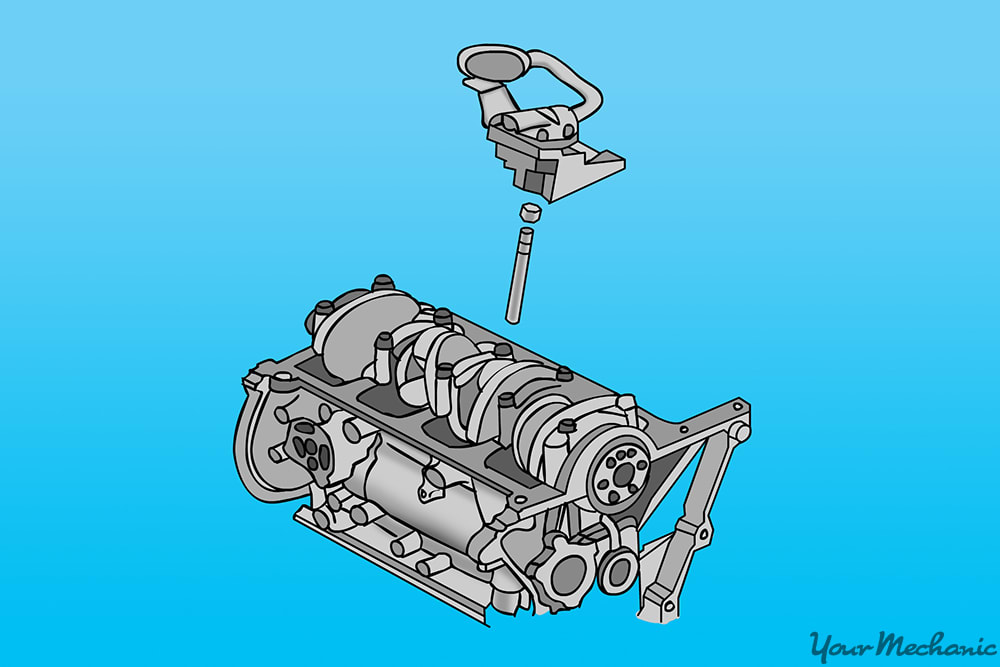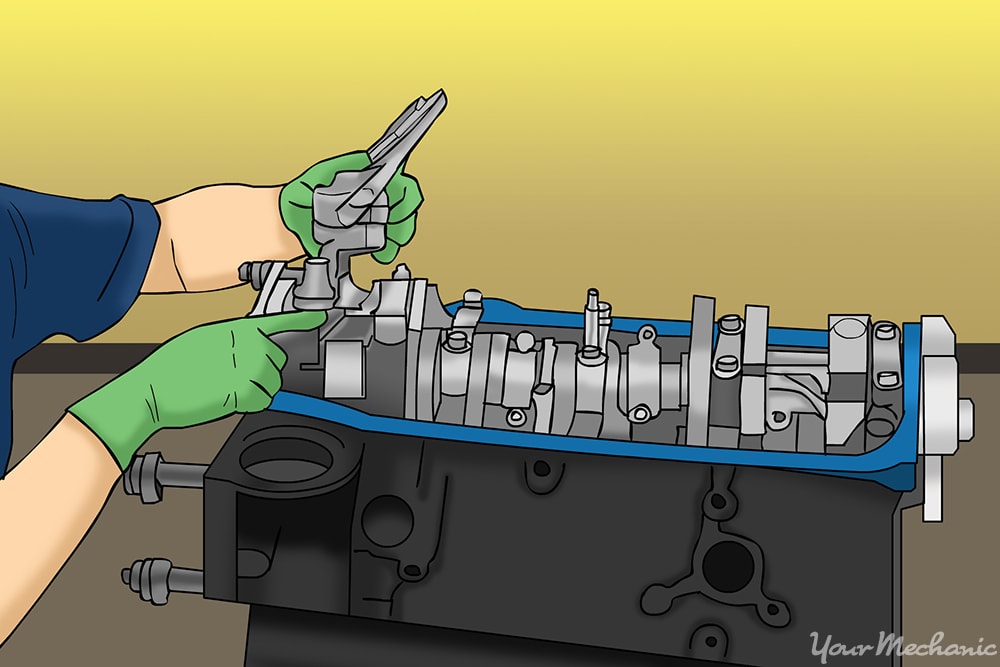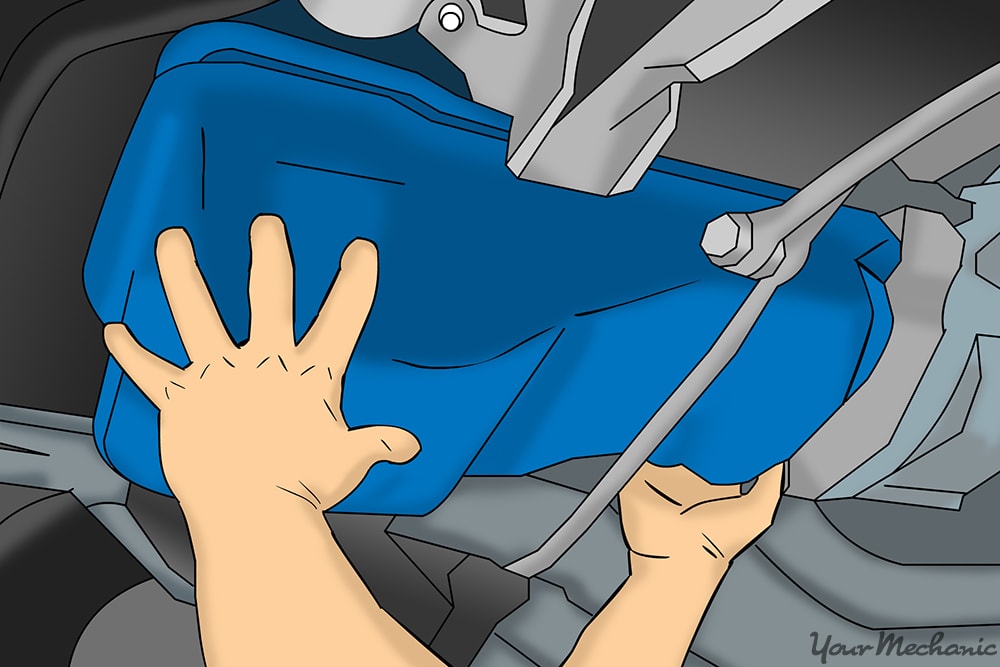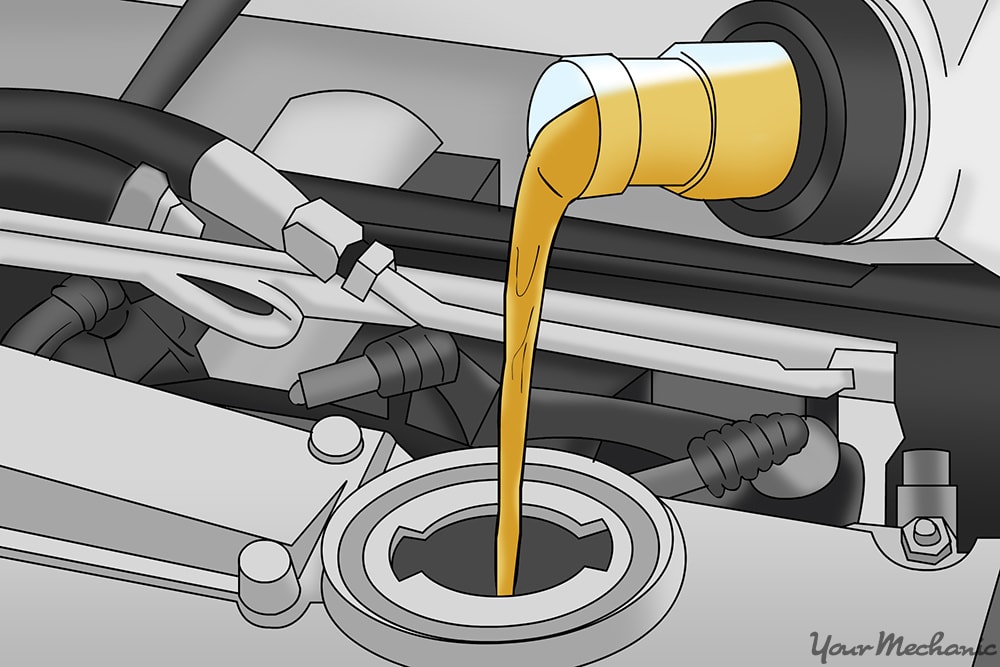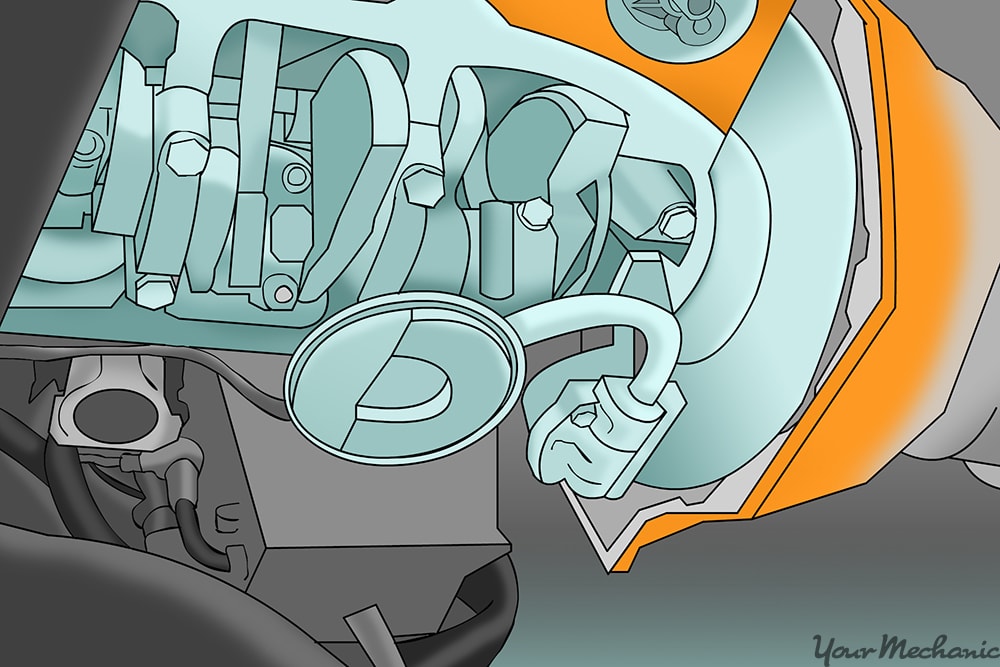

The oil pump is the heart of the engine - it pumps vital lubricant and supplies pressure to every moving part. The pump is required to provide 3 to 6 gallons of oil per minute while also maintaining system pressure.
Most oil pumps are driven off the camshaft or distributor shaft. The pump itself typically consists of two gears in a close-fit housing. When the gear teeth come out of mesh, they leave a space, which is filled by oil drawn through the pump inlet. Oil then travels to the space between the gear teeth, where is it forced through the teeth into an oil passage, creating pressure.
If your oil pump isn’t working properly, it won’t be long until your engine becomes an oversized paperweight. A failed pump can lead to low oil pressure, lack of lubrication, and eventual engine failure.
Part 1 of 3: Prepare the vehicle
Materials Needed
- Free repair manuals - Autozone provides free online repair manuals for certain makes and models Autozone
- Jack and jack stands
- Oil drain pan
- Protective gloves
- Repair manuals (optional)
- Safety glasses
- Wheel chocks
Step 1: Chock the wheels and set the emergency brake. Park your vehicle on level ground and set the emergency brake. Then place wheel chocks behind the front wheels.
Step 2: Jack up the vehicle and remove the wheels. Place the jack under a sturdy portion of the frame.
If you have any questions as to where to place the jack on your particular vehicle, consult the repair manual. After you have the vehicle in the air, place jackstands under the frame and lower the jack. Then remove the lug nuts completely and remove the wheel.
Step 3: Disconnect the negative battery cable.
Step 4: Drain the engine oil.
Part 2 of 3: Remove the oil pump
Step 1: Remove the oil pan. Remove the oil pan bolts and then remove the pan.
On some vehicles you made need to remove other items first to access the pan, such as the the starter motor, exhaust pipe etc.
Step 2: Remove the old oil pan gasket. Use a gasket scraper if needed, but be careful not to scratch or damage the oil pan.
Step 3: Remove the oil pump. Remove the pump by unfastening the pump to rear bearing cap bolt and remove the pump and extension shaft.
Part 3 of 3: Install the pump
Step 1: Install the oil pump. To install the pump position it and the drive shaft extension.
Engage the drive shaft extension into the drive gear. Then install the pump-to-rear bearing cap bolt and tighten to spec.
Step 2: Install the oil pan. Clean the oil pan and install a new gasket.
Then, mount the pan to the engine, install the bolts and tighten the to spec.
Step 3: Fill the engine with oil. Make sure the drain plug is tight and refill the engine with oil.
Step 4: Remove the jack stands. Jack up the vehicle in the same location as before. Remove the jack stands and lower the vehicle.
Step 5: Remove the wheels chocks.
Oil pump replacement sounds like a dirty job - and it is. If you prefer to have someone get dirty for you, YourMechanic offers expert oil pump replacement at an affordable price. YourMechanic can replace your oil pump cover gasket or you O ring in the convenience of your own office or driveway.


